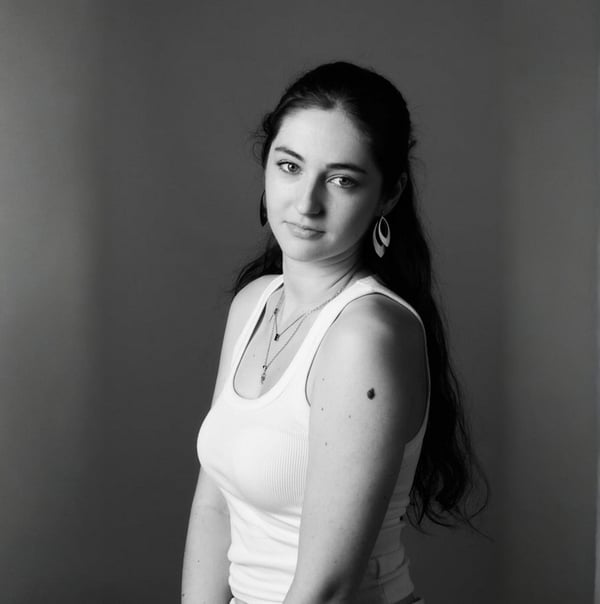Enhancing Mannequin Images for Modeling: How to Create Realistic Shots
Table of Contents
If there’s one thing that evolved fast in the digital fashion world, it’s how we use mannequins in product photos. They used to be just support neutral, practical, and kind of lifeless. Today, with the right technology and creativity, you can turn a mannequin photo into something as real and engaging as an editorial with models. But that takes more than just snapping a shot. There’s a whole technique (and art) behind realistic mannequin photography. One rising technique is enhancing mannequin images for modeling, which transforms static shots into life-like visuals.
Why mannequins still make sense
Despite the boom in CGI, digital avatars, and AI-generated models, physical mannequins still have a strong place. Brands use them because:
They save time and money (a shoot with models is way more expensive)
They offer more control over lighting, angle, and styling
They provide consistency for large product catalogs
The challenge is making these images come alive. The solution? Creative post production and smart techniques to simulate what we call "human realism." Enhancing mannequin images for modeling has become central to this transformation.
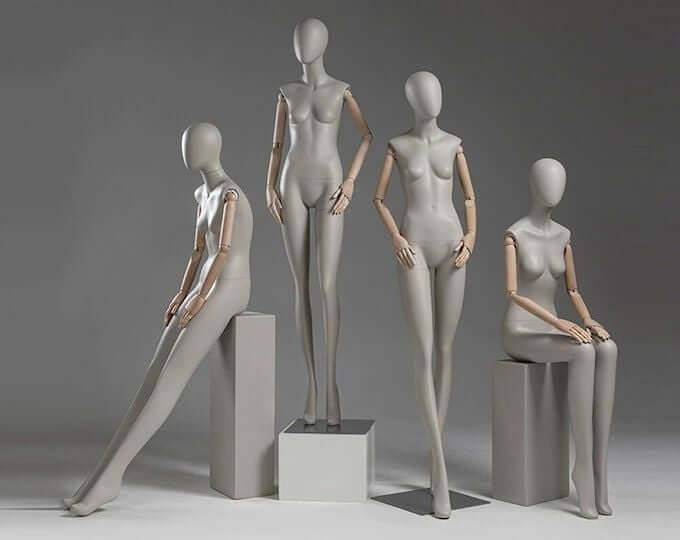
The magic is in the post
Let’s get straight to it: the shot is just the start. The difference maker comes afterward, with edits that remove the mannequin, fix proportions, adjust shadows, and recreate natural folds in the fabric, everything to make it feel like the piece is worn by a real person.
Modelia, for example, has developed proprietary tools to automate parts of this process, like smart mannequin cropping, realistic shadow addition, and fabric reconstruction. This reduces manual editing time and keeps visual consistency, which is key for brands handling massive catalogs. These innovations are directly aligned with enhancing mannequin images for modeling at scale.
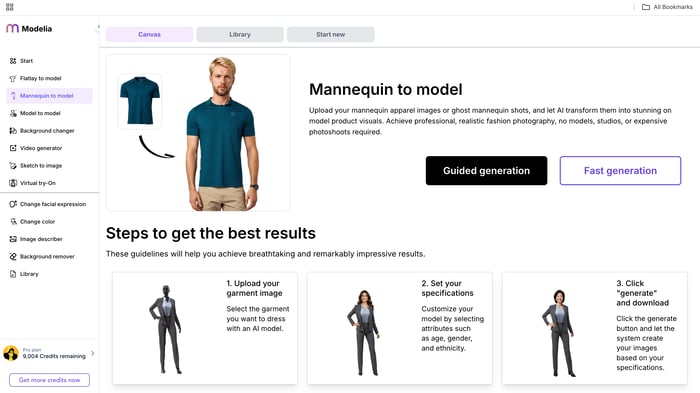
Tip #1 - Ghost mannequin technique
The ghost mannequin technique is a standard among top fashion brands. The goal is to remove the mannequin but preserve the garment's shape, making it look like it’s being worn by an invisible model. This technique plays a critical role in enhancing mannequin images for modeling.
How it works:
You shoot the garment on a mannequin.
Then you photograph internal details (like collars or inner labels).
In editing, you merge the two shots and remove the mannequin.
The result is a photo with depth and detail you just can’t get with a flat lay.
Brands like Burberry and Alexander McQueen use this technique to present tailored pieces flawlessly, showing structure, lining, and fit with high precision.
Tip #2 - Add realistic shadows
A common mistake with mannequin-edited photos is removing too much. The piece ends up floating or looking digitally pasted. The fix? Add realistic shadows.
This is where smart editing shines: generate shadows that match the garment’s shape, fabric weight, and the original light direction. It anchors the item visually and adds depth.
At Modelia, simulation-based tools analyze fabric type and cut to suggest smart shadow placement automatically. This speeds up production while keeping images consistent across collections. Enhancing mannequin images for modeling relies heavily on realistic light interplay.
Tip #3 - Add subtle movement
Small touches matter. A fold in the sleeve, a slight twist in the fabric, a ripple at the hem. These cues suggest the clothing is alive being worn.
Luxury brands like Dior have explored hybrid shoots using mannequins and AI effects to add this "breath of realism." The result? Catalogs that feel like editorials.
And you don’t need a huge setup. With skilled editing, you can make clothes "breathe". A good editor knows where to add these details: shoulders, sleeves, or areas that naturally shift with body movement. Enhancing mannequin images for modeling includes creating this illusion of motion.
Tip #4 - Pick the right mannequin
It might seem obvious, but many overlook it: the right mannequin matters. Poorly proportioned or overly stiff mannequins make editing harder.
Go for mannequins shaped more like real bodies. Some even come with adjustable joints and inclusive proportions, which helps a lot when aiming for realism.
Suppliers now offer mannequins tailored for specific segments like plus-size, petite, or curvy fashion. The closer it is to your customer, the better your final image will look. A good base is essential when enhancing mannequin images for modeling.
Tip #5 - Lighting is everything
Lighting can make or break a shoot. A proper setup highlights fabric texture, defines volume, and creates the right contrast. For mannequin photography, aim for soft side lighting with fill lights, avoiding harsh shadows.
Gucci, for example, has done campaigns where lighting was meticulously designed to make mannequin shots indistinguishable from model photography.
The trick? Use wide diffusers, reflectors, and continuous light instead of flash. That way, the shadows match naturally and are easier to work with during post.

Scaling it up
When you're dealing with hundreds or thousands of products, the challenge becomes maintaining quality at speed. That’s where solutions like Modelia's help. Their platform enables automated editing workflows, with specific rules by garment type shirts, dresses, jackets, and so on.
These flows can handle everything from background removal to subtle shape and lighting corrections, ensuring consistent brand visuals even with multiple photographers or studios involved. Enhancing mannequin images for modeling becomes scalable with this type of workflow.
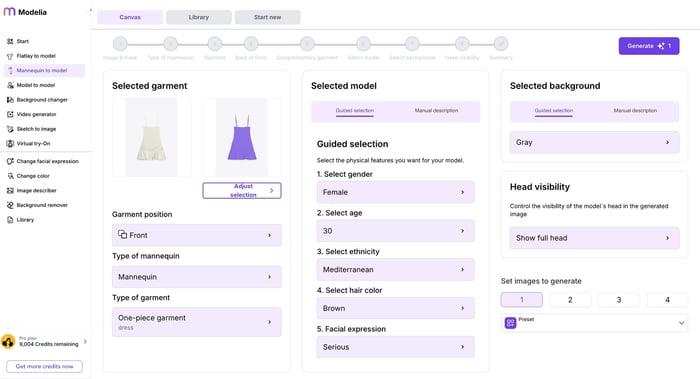
Looking ahead: what’s next?
The evolution of mannequin editing isn’t slowing down. Some future trends already shaping the space:
AI-generated body parts: Companies like Modelia are experimenting with tech that generates arms, legs, or necklines based on the garment. It creates semi-human looks without models or heavy manual retouching.
Virtual try-on integration: Some brands are linking mannequin images with 3D fitting rooms, where customers see how clothes might fit different body types. That requires photo precision in volume and shape.
Real-time editing assistance: Editors now get AI suggestions during the editing process for lighting, fabric adjustment, even garment alignment. It doesn’t replace people, but boosts speed and consistency.
Segment-specific visual edits: Brands are customizing images for different audiences, adjusting contrast or mannequin shape depending on gender, age, or style preferences.
These trends all point to a future where tech and creativity work together to deliver better, faster, and more engaging visual experiences. And whoever masters that now will lead the market. Enhancing mannequin images for modeling will evolve into a core part of fashion brand operations.
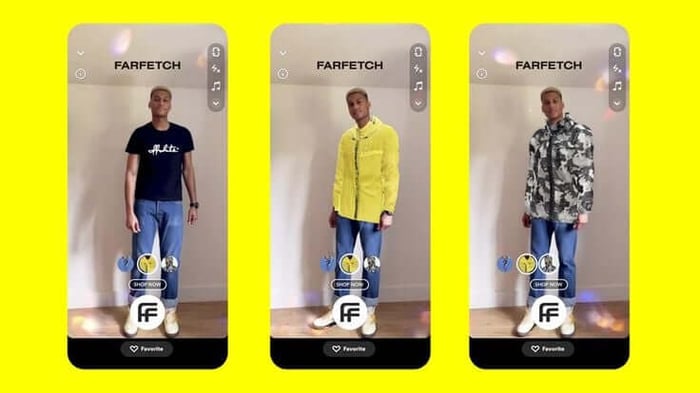
How to Create a Consistent Mannequin Editing Workflow for Your Brand
One of the biggest challenges in enhancing mannequin images for modeling isn't just achieving realism, it's doing so consistently across dozens, hundreds, or even thousands of product images. Whether you're managing an internal photo team or working with outsourced photographers and editors, having a structured editing workflow is critical.
Start by developing a visual guide that defines your brand's photography standards: angles, lighting, proportions, shadow placement, and garment positioning. This ensures that every image follows the same visual language, regardless of who captures it or edits it.
Once you have those standards in place, the next step is choosing tools that can automate and simplify parts of the process. Modelia, for instance, lets you set pre-defined rules by garment type, so a shirt, dress, or jacket can each be treated differently in post-production without requiring individual manual edits. This level of control is essential for brands that publish new product lines frequently or update visuals seasonally.
By building repeatable steps, from garment steaming and mannequin prep to file naming and editing layers, you streamline the entire production chain. It also helps reduce revision rounds, lower production costs, and speed up go-to-market timelines.
With the right editing framework and a tool like Modelia to support it, you're not just enhancing mannequin images for modeling, you’re creating a scalable system that preserves brand quality and accelerates creative output.
Wrapping It Up
"Invisible model" visuals aren’t just editing tricks, they’re strategic tools to showcase fashion products with high impact and efficiency. Mannequins remain a powerful asset, as long as they’re used with smart techniques and creative intent.
Luxury brands are already investing in hybrid solutions. And companies like Modelia are pushing the boundaries, developing tech to turn simple photos into complete visual experiences.
The trend is clear: more realism, better scalability, and less dependence on physical models. Brands that embrace this shift now will stand out in both speed and visual quality. Enhancing mannequin images for modeling is not just a technique, it’s a competitive advantage.
How would you rate this article:
Related Articles
- AI Clothes Swap: Revolutionizing Your Wardrobe with Virtual Outfit Transformations
- Content Marketing for Ecommerce: How to Attract and Retain Customers
- 10 AI Tools for Image Enhancement: Boost Your Photos and Product Images
- Autumn Fashion Trends 2025: Key Styles & Outfit Ideas
- 5 Innovation ways to use AI in fashion
- Enhancing Mannequin Images for Modeling: How to Create Realistic Shots
- Machine Learning Image Enhancement: How AI is Transforming Image Quality and Clarity
- Branding for Ecommerce: Strategies for Creating an Impactful Online Presence
- The Ultimate Guide to Dressing for Your Body Shape: Find the Best Clothing Styles
- AI Person Generator: Generate Unique and Realistic People with AI
